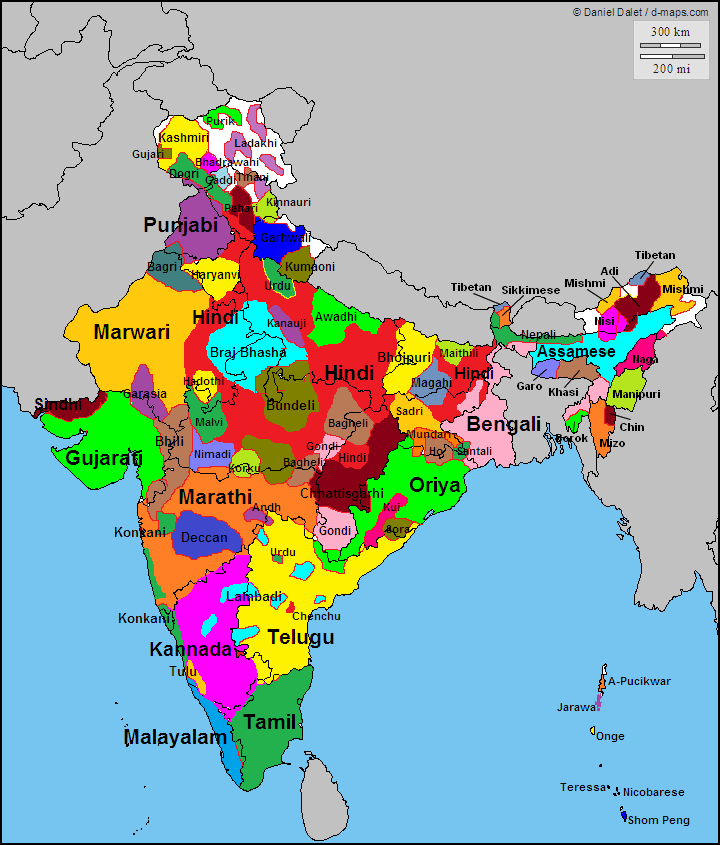India-- Tongues of Languages

When the British arrived in India they attempted to understand the diversity of this land: religious practices, cultures, and languages changed in various parts of India. Sometimes the same "religion" appeared at multiple places with different practices, and with different names. The dresses and practices varied between communities, based on location and/or historical backgrounds. Sometimes languages sounded similar, although the pronunciations were vastly different.
Let's look at only the languages spoken across the Indian subcontinents, a map of which is shown in the image above.
As the british found out, languages varied quite drastically over a distance of 100 kilometers, while showed remarkable changes over 10 km distances. Their early documentation about this cemented tongues broadly grouped into languages, where the tongue belonging to powerful population groups were called "languages", whereas others close to them in characteristics were clubbed under "dialects" of a certain major language.
Therefore, "Hindawi", a language spoken in and around Delhi was considered a language, while "Braj Bhasha", "Awadhi", or "Kannauji" became dialects. We now know this did and continues to do gross injustice to languages, since the ones with more speakers are given weight over other languages with less number of speakers, and/or from economically weaker sections of the society. A large part of constitutional debate (in 1950) was spent on this language divide, and issue which resonates even today.
We believe that languages in India are a unique treasure for this country and contain immense knowledge. Therefore, Lipee is committed to create digital tools and platforms for each language, build digital data corpora, and services for common language speakers.